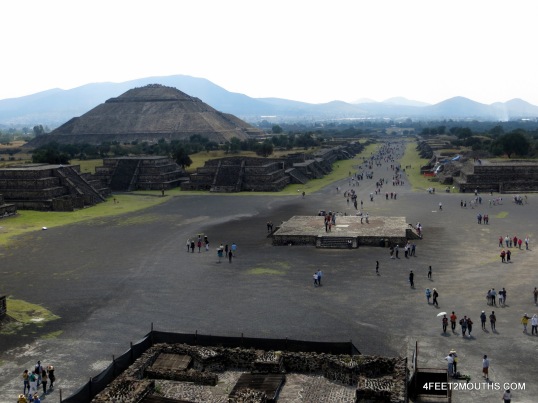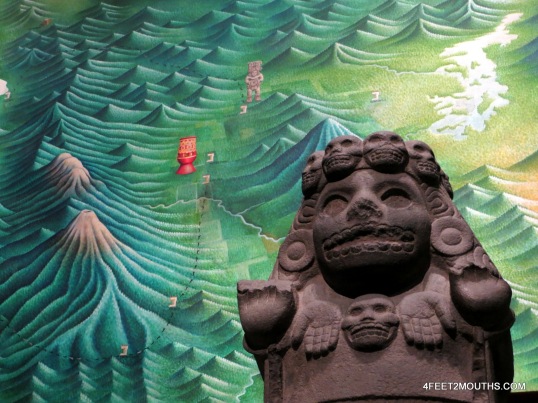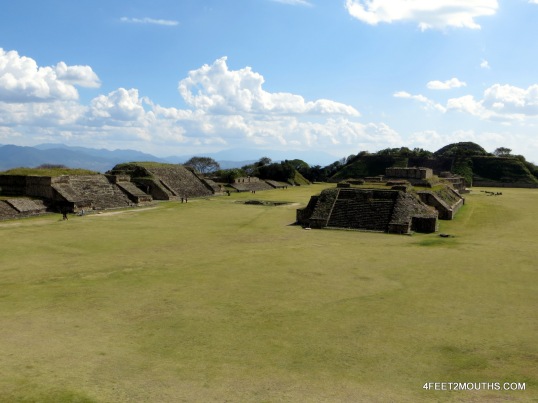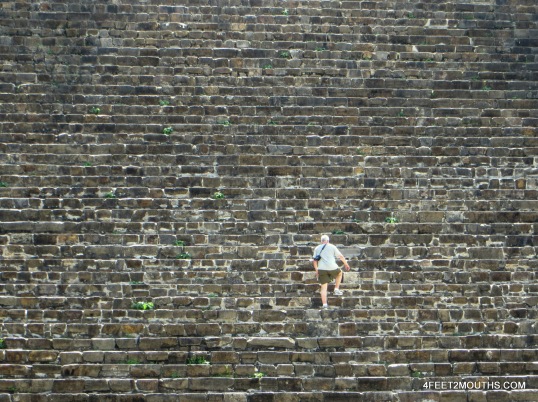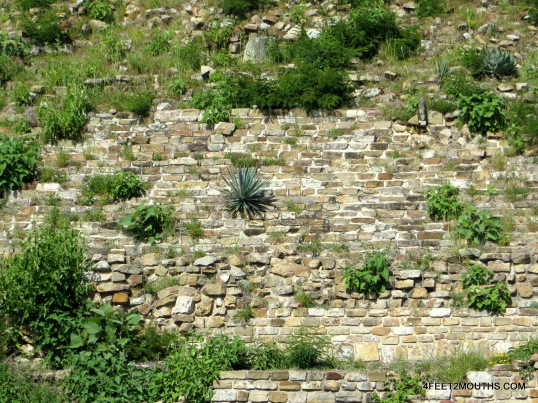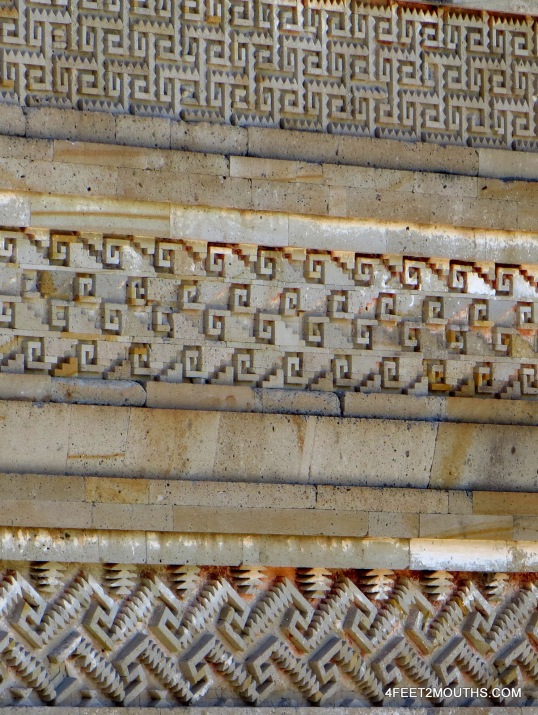
Sunrise Angkor Wat
Does it get more beautiful than that? A visit to Angkor Wat requires a journey, a good story to tell and some real adventure. We tried our best and this is what happened:

Here I am in my upper berth bed on the way to Bangkok
Crossing borders into developing countries is always an adventure. We had expected something along the lines of the Bolivian guns and egos that we experienced in April, but crossing into Cambodia was surprisingly smooth and safe. Go us! The challenge was that we decided to take transit from the middle of Thailand to the middle of Cambodia. And thirty hours later with six modes of transit, the trip was a success. Starting on Koh Tao Island we hopped in the back of a truck to taxi to the port, then a ferry boat to the mainland, then we took a regional bus to Chumphon and, crap, a three hour delay of our overnight train. Eventually we climbed onto our tiny upper bunks and we slept until morning when we arrived in Bangkok. We grabbed a local city bus to the edge of town, then a regional bus to the Cambodian border. With luck we could walk to the border, acquire visas and cross where we bargained for six of us (we met 3 new friends) to pile into a 90’s Honda accord. Another two and a half hours and we arrived in Siem Reap with spending only $46 each for 650 miles (1040km) of travel.

Bantaray Srei

Carving at Bantaray Srei

Bantaray Srei reflection pool
Siem Reap is the adjacent city to one of the most renown collection of temples and relics of an ancient empire. The historic city of Angkor was huge in the 1100’s with over one million people. Today all that remains are the temples and palaces that were built from stone. The most known building, Angkor Wat, is just one of twenty ornately carved and grandly built structures. On our first day we decided to ease into Angkor so we visited a temple further out called Banteay Srei. We walked in and out of doorways and around domed temples admiring the detailed carvings. Many of the figures address Hindu gods and stories as well as Buddhist elements because the king that built much of Angkor liked aspects of both religions.

Scootering family

Rice noodles, curries and coconut
Our mode of transit was a tuk tuk because some of the temples are 20 miles from Siem Reap. We hired a friendly man that carted us around for the day. Families would pass us on their scooters and the standing toddlers would wave to us shouting “hallo!”. For lunch we had to repeatedly tell “Smee,” our drivers name, to not take us to one of the tour bus restaurants. He undoubtedly wanted a commission, but we insisted on a little village center that had a few stands. We found a place that piled a heap of rice noodles onto a plate and scooped intense curry over the top of it. A basket filled with local greens sat on the table for us to add as we wished. We washed it down with a fresh coconut and we were off to see more temples.

Banteay Samré

Banteay Samré doorway
Banteay Samré was another beautiful temple. This one sits a little off the beaten tourist track, but we enjoyed exploring the nearly vacant complex imagining thousands of people living around and using this building daily.

Ta Som temple

Neak Pean walkway
Mid-way along our tuk tuk ride we decided that we should organize the places to visit a little better. We have to admit that we like to be better planned when we travel, but constant movement has made it difficult to know what we want to even do each day. Most of the Angkor sights are divided among a big circuit and a small circuit. We talked it over with Smee and then we were chugging along the road to more ancient ruins along the big circuit. Ta Som had a beautiful tree that took over a wall and Neak Pean was difficult to see because it was fenced off. The walk to Neak Pean was really special; wood planks along an elaborate man-made moat and a traditional band playing music made visiting the sacred pool feel pleasantly tranquil.

Carmen and the march of rainbow umbrellas
It is possible to feel both overcrowded and alone in these temples. Travelers riding bicycles and tuk tuks intermix with the busses of tour groups. We were amused, and originally frustrated, but eventually delighted when a group of Chinese women took over our photo with their umbrellas. In the end I liked the photo with the variety of color more than the one without the bus group.

Preah Khan

Preah Khan carved wall
Preah Khan is one of the most beautiful and elaborate of the temples. Many of the walls and domes have collapsed, but it is possible to meander and weave around the rubble to find beautiful splashes of red and green on the black stone. A security guard even showed us a place where we could climb to the top of the wall to admire the buildings.

Angkor Wat from Phnom Bakheng

Angkor Wat from west
The main attraction is Angkor Wat, and let’s face it, few know more about Cambodia other than Angkor Wat. We were still building up the suspense, so we climbed up the small mountain to reach Phnom Bakheng and view the setting sun on Angkor Wat. At the top we then waited an hour to be able to climb to the top of temple. There were several hundred people already there, but not looking at Angkor Wat, they were freaking out at the rather plain and hazy sunset. I love sunsets, but this one was meh, and did not deserve the intense shoulder bumping and screams of delight when it hit the horizon. A little disappointed, we returned to Siem Reap to ready ourselves for another temple day.

Wall frieze at Angkor Wat

The temple is dedicated to Vishnu

Carved window pillars
Exploring Angkor Wat takes several hours. The approach is a wide bridge that crosses a moat that is a big as a small lake. Through the main gate we have our first view of the temple from the ground. Huge fields flank the walkway with two smaller temples at about midway. Beyond the temples the elevated walkway sits above two large ponds that are used for the notorious reflection shots of Angkor Wat. We then entered the main gate and were memorized by the elaborate carvings. It appears that the temple was etched throughout. Room after room were carved stories of Brama, or the monkey king, or battles long since forgotten.

Angkor Wat East

Angkor Wat South
The Wat sits in its own shadow for most of the day, so we walked around the back and the side to get a better look enormous building There is a mountainous hierarchy of domes that symmetrically towers overhead. This a truly magnificent 800 year old building.

Angkor Thom South Gate

The faces of Bayon
We had rented some ancient bikes that appeared to have been operational for the last fifty years. But they worked great and we explored big portions of the Angkor small circuit. Angkor Thom is a huge walled complex that housed the palace buildings of the former king. At each entrance there is a huge gate with the carved face of King Jayavarman VII, look closely and you can see Carmen on a bike. One of our favorite temples was Bayon. This elaborate building contains 216 carved faces. The beautiful carved contours of each has stood the weathering of time, but like real humans each has aged uniquely.

The elephant terraces

The Leper King Terrace carved wall
A huge field in Angkor Thom has elaborately carved elephants into the retaining walls. This elephant terrace allowed for the king and companions to board their elephants when traveling throughout the region. The terrace of the Leper King also has an elaborate retaining wall with detailed carvings that meander around the hillside.

Carmen Croft, Tomb Raider

Thom Prohm dome

Thom Prohm tree take over
Thom Prohm is most known for being highlighted on Tombraider. Carmen showed us her guns. The abundance of trees that have taken over and destroyed Thom Prohm is amazing. Huge 80ft trees tower above while wrapping themselves around a wall or small dome. Streams of people and tour groups admire the beauty these ancient buildings being intertwined with a forest of trees.

Crazy sunrise photographers

The sun rises over Angkor Wat
I did not realize the hoards of people that were possible at a sight until I went to see Angkor Wat at sunrise. We have seen crazy tourists wielding cameras at the Cristo, Iguazú, and Taj Mahal, but this was all out war of photography. On the third day I woke in the dark and I left Carmen sleeping to begin my bicycle ride to the temple. The 12km seemed endless as a pumped the peddles to get there before sunrise. When I arrived, the scene was horrendous- thousands of people all trying to get the perfect shot. I believe in “camera karma,” but I had finding trouble peaking over the ten person deep crowd. Eventually after wading into the slimy muck I waited patiently. I watched a Chinese man take his 200th photo and I asked if I could squeeze it. The look I received from him and his wife was as if I was asking to go in on a threesome, cameras left aside, unfortunately they did not budge. The colors faded from reds to pinks and surprisingly all the tour groups deserted the banks. Apparently tour groups have a schedule because I remained, now with elbow room to admire the oranges and yellows and the sun cresting over the top of the temple. For a micro-moment I felt alone and peace with this beautiful sight. Angkor Wat is stunningly magnificent.

Sunset Angkor Wat moat

Pond lily
Some of the most beautiful and wonderful aspects of Siem Reap were not even the temples. A sunset on a reflection pool or the lily flowers blooming in the pond at Ankor Wat were as amazing as all the beautiful temples. I biked back to the hotel after the sunrise, but I decided to stop at a small market for breakfast. I pointed my way to get a bowl of rice porridge and a glass of iced coffee. We packed our bags and scheduled a regional bus. Siem Reap was short and eventful, but something was missing from the experience- good Cambodian food. Battambang here we come, and we’re hungry.

